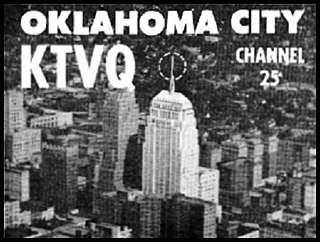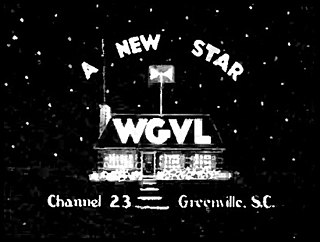Related Research Articles

WHEC-TV is a television station in Rochester, New York, United States, affiliated with NBC. Owned by Hubbard Broadcasting, the station maintains studios on East Avenue in Downtown Rochester and a transmitter on Pinnacle Hill in Brighton.

KTBS-TV is a television station in Shreveport, Louisiana, United States, affiliated with ABC. The station is owned by the locally based KTBS, LLC, alongside Minden-licensed CW affiliate KPXJ. The two stations share studios on East Kings Highway on the eastern side of Shreveport; KTBS-TV's transmitter is located near St. Johns Baptist Church Road in rural northern Caddo Parish. Currently, KTBS-TV is one of a handful of American television stations to have locally based ownership.
WVUT, branded on-air as Vincennes PBS, is a PBS member television station in Vincennes, Indiana, United States. Owned by Vincennes University, it is sister to campus radio station WVUB. WVUT's studios are located on North 2nd Street and Rosedale Avenue in Vincennes, and its transmitter is located southeast of the city off SR 61.

WJTV is a television station in Jackson, Mississippi, United States, affiliated with CBS. Its second digital subchannel serves as an owned-and-operated station of The CW. Owned by Nexstar Media Group, the station has studios on TV Road in southwest Jackson, and its transmitter is located in Raymond, Mississippi.
WNED-TV is a PBS member television station in Buffalo, New York, United States. It is owned by the Western New York Public Broadcasting Association alongside NPR member WBFO and classical music radio station WNED-FM (94.5). The three stations share studios in Horizons Plaza at 140 Lower Terrace in downtown Buffalo; WNED-TV's transmitter is located in Grand Island, New York.

WVLT-TV is a television station in Knoxville, Tennessee, United States, affiliated with CBS and MyNetworkTV. It is owned by Gray Television alongside Crossville-licensed dual CW/Telemundo affiliate WBXX-TV. The two stations share studios on Papermill Drive on the west side of Knoxville; WVLT-TV's transmitter is located on Sharp's Ridge in North Knoxville.

WCAN-TV was a television station in Milwaukee, Wisconsin, United States, which operated from 1953 to 1955. It was the second television station and first ultra high frequency (UHF) outlet in Milwaukee and was owned by Midwest Broadcasting Company. Affiliated with CBS throughout its history, it shut down when the network bought its primary competitor, WOKY-TV, taking with it the CBS affiliation; Poller sold the physical plant to CBS, while the WCAN-TV construction permit remained active and in force until 1969.
WKLO-TV was a UHF television station in Louisville, Kentucky, United States, that operated from October 18, 1953, to April 20, 1954.

KTVQ was a television station in Oklahoma City, Oklahoma, United States, which operated from November 1, 1953, to December 15, 1955. The station was owned by the Republic Television and Radio Company. KTVQ's studios were located on Northwest 19th Street and North Classen Boulevard in northwest Oklahoma City's Mesta Park neighborhood, and its transmitter was located atop the First National Bank Building on North Robinson and Park avenues in downtown Oklahoma City.
KCTY was a television station in Kansas City, Missouri, United States. It broadcast on ultra high frequency (UHF) channel 25 from June 6, 1953, to February 28, 1954, and was the second television station to begin broadcasting in the Kansas City area after WDAF-TV. KCTY was an affiliate of the DuMont Television Network; originally owned by the Empire Coil Company, which had pioneered UHF telecasting, DuMont purchased the station outright at the end of 1953 and operated it for two months as a study in the problems of struggling UHF stations nationwide before concluding that there was no path to economic viability. The studio for KCTY was located in the Pickwick Hotel in downtown Kansas City; the transmitter was located in a rural area that today is part of Overland Park, Kansas.

WROV-TV was a television station on ultra high frequency (UHF) channel 27 in Roanoke, Virginia, United States. It broadcast from March 2 to July 18, 1953, becoming the first UHF station in the United States to cease broadcasting. Its failure was the first of many in the early days of UHF television, which was hindered by signal issues in mountainous areas and the lack of UHF tuning on all television sets—a problem not resolved until the All-Channel Receiver Act took effect in 1964.
WGBS-TV was a television station that broadcast on channel 23 in Miami, Florida, United States, from 1953 to 1957. Originally established as WFTL-TV in Fort Lauderdale, it moved south to Miami when it was purchased by Storer Broadcasting at the end of 1954 and consolidated with a construction permit Storer bought for a Miami station.

UHF television broadcasting is the use of ultra high frequency (UHF) radio for over-the-air transmission of television signals. UHF frequencies are used for both analog and digital television broadcasts. UHF channels are typically given higher channel numbers, like the US arrangement with VHF channels (initially) 1 to 13, and UHF channels (initially) numbered 14 to 83. Compared with an equivalent VHF television transmitter, to cover the same geographic area with a UHF transmitter requires a higher effective radiated power, implying a more powerful transmitter or a more complex antenna. However, the additional channels allow more broadcasters in a given region without causing objectionable mutual interference.

The Illinois–Indiana–Kentucky tri-state area is a tri-state area where the U.S. states of Illinois, Indiana, and Kentucky intersect, and a region of the Upland South. The area is defined mainly by the television viewing area and consists of ten Illinois counties, eleven Indiana counties, and nine Kentucky counties, centered upon the Ohio and Wabash Rivers.
WACH-TV, UHF analog channel 33, was a commercial television station licensed to Newport News, Virginia, United States, which broadcast from 1953 until 1955. The station was owned by the Eastern Broadcasting Corporation.

WGVL, UHF analog channel 23, was a television station in Greenville, South Carolina, United States that existed from 1953 to 1956. The station was the first to operate in Greenville, but like many early UHF stations, the arrival of new stations on the VHF band imperiled its ability to secure programming and viewers. WGVL signed off the day that WSPA-TV signed on channel 7, having fought for years alongside fellow UHF station WAIM-TV in Anderson to prevent the television station from being built; the case lingered into 1960, well after the station ceased broadcasting.

KTVE, UHF analog channel 32, was an independent television station licensed to Longview, Texas, United States, that operated from 1953 to 1955. KTVE was one of the first television stations in east Texas. However, its use of the quickly outmoded UHF, and the arrival of a VHF station in the form of KLTV, made continued operation unviable, and the station closed on Christmas Day 1955.
KETX was a television station on channel 19 at Tyler, Texas, that operated between September 1953 and October 1954. It was the first television station in East Texas and the first UHF station in the entire state; however, its operation was fraught with technical and financial difficulties, and the coming of a VHF station, KLTV, was an existential threat to the smaller UHF outlet, causing its closure.
WITV was a television station that broadcast on channel 17 in Fort Lauderdale, Florida, United States. Owned by the Gerico Investment Company, it was the third television station on the air in the Miami–Fort Lauderdale area and the fourth in South Florida, operating from December 1953 to May 1958. It was doomed by troubles that plagued ultra high frequency (UHF) television in the days before the All-Channel Receiver Act and particularly the arrival of two additional VHF TV stations to Miami in 1956 and 1957. The WITV transmitter facility was purchased by the Dade County School Board, eventually resulting in the reactivation of channel 17 as Miami-based WLRN-TV in 1962.
WBUF-TV was a television station that broadcast on ultra high frequency (UHF) channel 17 in Buffalo, New York, United States. It broadcast from August 17, 1953, to February 1955 and again from March 1955 until the morning of October 1, 1958.
References
- ↑ "WRAY-TV" (PDF). Television Factbook. Spring 1955. p. 271. Retrieved September 2, 2020.
- 1 2 "Princeton Granted TV Channel 52". Princeton Clarion-News. March 12, 1953. p. 1. Retrieved September 2, 2020.
- ↑ "Hope To Have TV Station Here Ready By Oct. 1". Princeton Clarion-News. June 4, 1953. p. 1. Retrieved September 2, 2020.
- ↑ "WRAY—Princeton (Channel 52)". Princeton Clarion-News. July 2, 1954. p. 7. Retrieved September 2, 2020.
- 1 2 "More UHFs Leaving Air As Senators Ponder" (PDF). Television Digest. July 10, 1954. Retrieved September 2, 2020.
- 1 2 3 "1960 March of Dimes" (PDF). Broadcasting. February 8, 1960. p. 94. Retrieved September 2, 2020.
- ↑ "Polio Telethon To Bring Noted Personalities To Princeton". Princeton Clarion-News. January 18, 1954. p. 1. Retrieved September 2, 2020.
- ↑ "Princeton TV Equipment Sold To Vincennes U." Princeton Daily Clarion. December 30, 1960. p. 1. Retrieved September 2, 2020.
- ↑ "History Cards for WVUT". Federal Communications Commission. (Guide to reading History Cards)